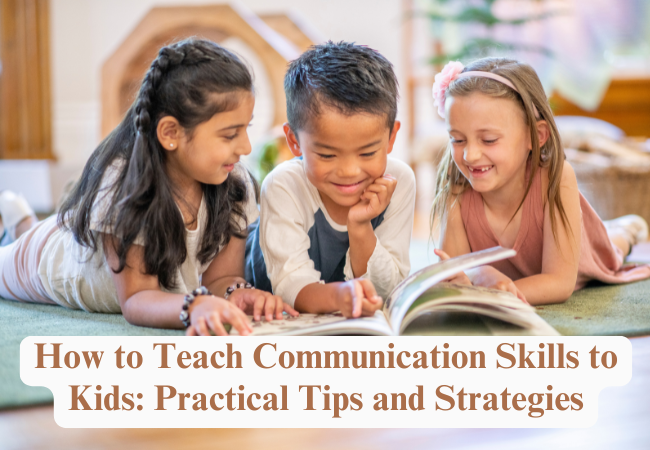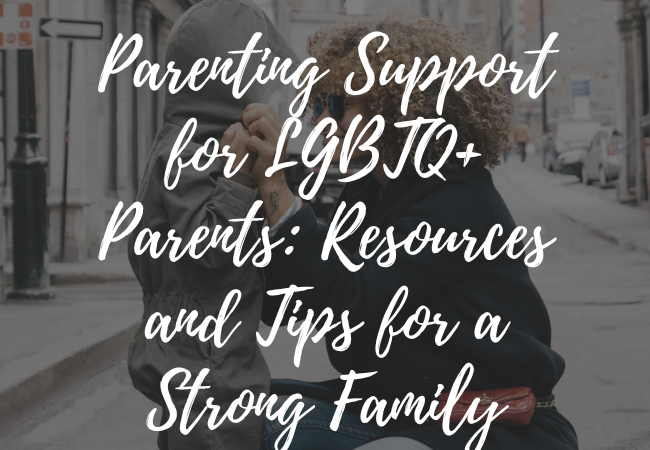How to Teach Communication Skills to Kids: Practical Tips and Strategies
Discover effective ways to teach communication skills to kids. Learn practical tips, activities and strategies to help children express themselves clearly and confidently.
Communication is a fundamental life skill that plays a crucial role in a child’s social, emotional and academic development. By teaching children effective communication skills early on, we equip them with tools that will benefit them throughout their lives. This guide offers practical tips and strategies for parents, teachers and caregivers to help children develop strong communication abilities.
Why Communication Skills Matter for Kids

Before diving into strategies, let’s understand why these skills are so important:
- Builds self-confidence
- Enhances social relationships
- Improves academic performance
- Helps in conflict resolution
- Prepares them for future career success
Practical Tips for Teaching Communication Skills
1. Model Good Communication
Children learn by example, so:
- Practice active listening when your child speaks
- Use clear and respectful language
- Demonstrate non-verbal cues like eye contact and appropriate body language
2. Encourage Regular Conversations
- Have daily discussions about their day
- Ask open-ended questions to promote dialogue
- Create a judgment-free zone for sharing thoughts and feelings
3. Teach Active Listening
- Explain the importance of paying attention when others speak
- Encourage them to ask questions for clarification
- Practice summarizing what others have said
4. Develop Vocabulary
- Introduce new words regularly
- Explain meanings in context
- Encourage the use of descriptive language
5. Practice Empathy and Emotional Intelligence
- Help children identify and express their emotions
- Teach them to recognize others’ feelings
- Discuss how words and actions can affect others
6. Use Role-Playing Exercises
- Act out various social scenarios
- Practice introducing themselves to new people
- Simulate problem-solving conversations
7. Encourage Reading and Storytelling
- Read together regularly
- Ask them to retell stories in their own words
- Encourage creative storytelling
8. Teach Non-Verbal Communication
- Explain the importance of body language and facial expressions
- Practice interpreting non-verbal cues
- Discuss how tone of voice affects communication
9. Utilize Technology Wisely
- Use educational apps that focus on language skills
- Practice video chatting with family members
- Discuss responsible online communication
10. Provide Opportunities for Public Speaking
- Encourage them to share ideas in group settings
- Practice giving short presentations at home
- Participate in school plays or debates
Age-Appropriate Communication Activities
For Preschoolers (3-5 years)
- Play “Simon Says” to practice listening skills
- Use puppets for storytelling and role-playing
- Engage in “show and tell” activities
For Elementary School Kids (6-12 years)
- Practice writing and delivering short speeches
- Play board games that involve description and explanation
- Start a family newsletter or blog
For Teenagers (13-18 years)
- Encourage participation in debate clubs or public speaking groups
- Practice job interview scenarios
- Discuss complex topics to develop argumentative skills
Overcoming Common Communication Challenges
Shyness
- Start with small, comfortable settings
- Gradually increase exposure to social situations
- Praise efforts to communicate, not just outcomes
Speech Impediments
- Seek professional help if needed
- Practice patience and encouragement
- Focus on content rather than delivery
Technology Overuse
- Set clear boundaries for device use
- Encourage face-to-face interactions
- Discuss the importance of balancing digital and in-person communication
The Role of Schools in Communication Development
- Advocate for communication-focused activities in the classroom
- Participate in parent-teacher conferences to discuss your child’s progress
- Support school programs that promote public speaking and debate
Conclusion
Teaching communication skills to children is an ongoing process that requires patience, consistency and creativity. By implementing these strategies and providing regular opportunities for practice, we can help children develop the confidence and ability to express themselves clearly and effectively.
Remember that every child develops at their own pace and it’s important to tailor your approach to your child’s individual needs and personality. Celebrate small victories and continue to provide a supportive environment for growth.
Effective communication is a lifelong skill that will serve children well in their personal relationships, academic pursuits and future careers. By investing time and effort into developing these skills now, we’re setting them up for success in all areas of life.
For more resources on child development and communication skills, check out:
- American Speech-Language-Hearing Association
- National Association for the Education of Young Children
- Understood.org: Communication Skills for Kids
Remember, the goal is to help children find their voice and use it confidently. With patience, practice and positive reinforcement, every child can become an effective communicator.
For more information and guide, visit usaparentingtips.com






